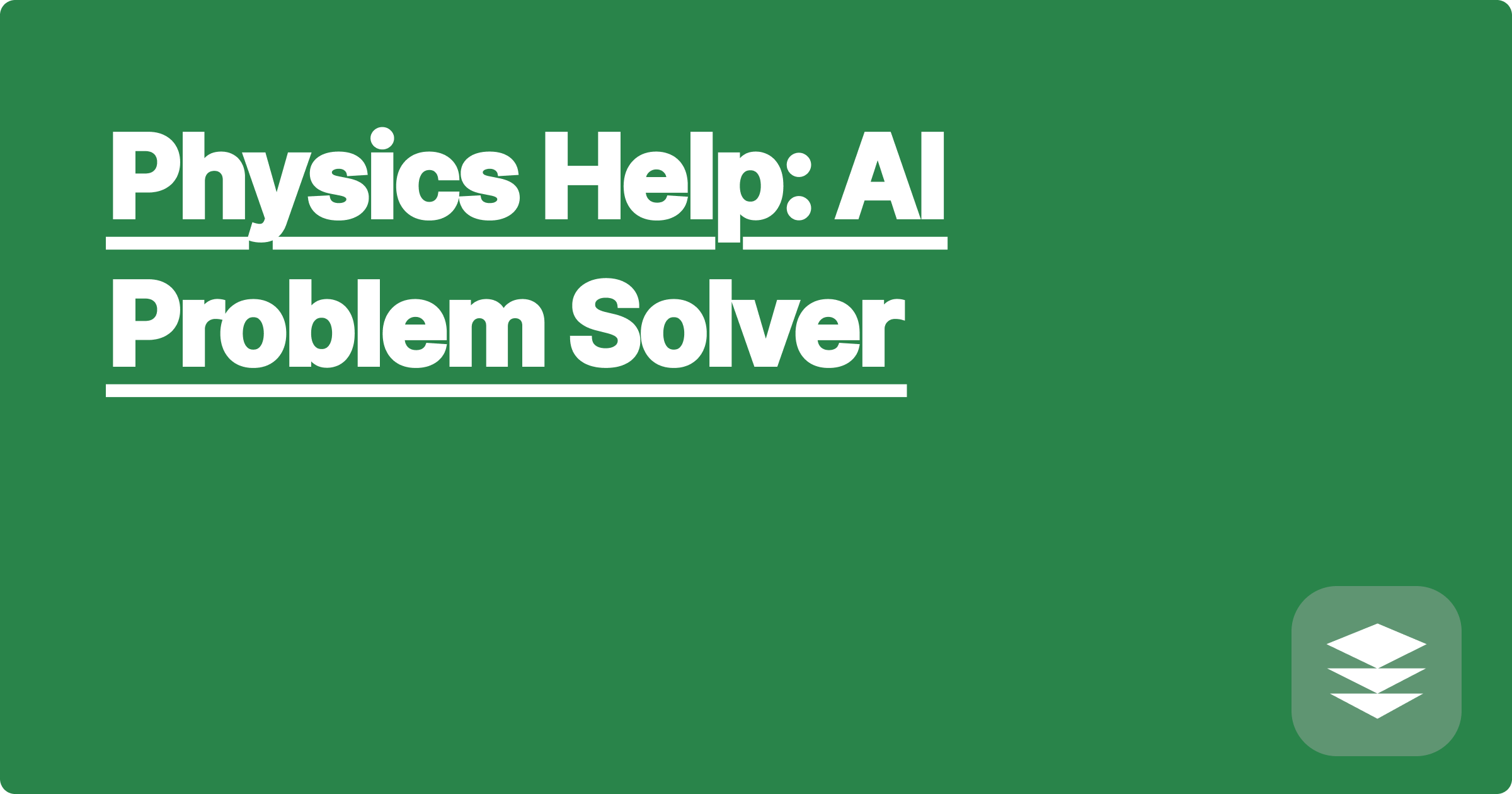
STEM fields often present complex challenges, particularly in physics, where understanding intricate concepts and solving intricate problems can be daunting. Fortunately, the rise of artificial intelligence offers new and powerful tools to assist students and researchers in tackling these challenges. AI-powered problem solvers can offer support ranging from conceptual explanations to step-by-step solutions, making them invaluable resources for anyone navigating the complexities of physics.
This new paradigm in problem-solving is especially relevant for STEM students and researchers. It offers the potential to enhance understanding, improve problem-solving skills, and accelerate research progress. By leveraging the capabilities of AI, students can gain a deeper intuition for complex physical phenomena, while researchers can explore new avenues of inquiry and accelerate the pace of scientific discovery. Mastering these tools can provide a significant advantage in academic and professional pursuits.
Physics, at its core, involves understanding the fundamental laws governing the universe, from the smallest subatomic particles to the largest galaxies. This understanding often requires grappling with complex mathematical formulations, abstract concepts, and intricate problem-solving techniques. One common challenge for students and researchers alike is translating a real-world physical scenario into a mathematical model. This process necessitates identifying the relevant physical principles, selecting appropriate equations, and manipulating these equations to arrive at a meaningful solution. Furthermore, interpreting the results in the context of the original problem can be equally challenging, requiring a deep understanding of the underlying physical principles and their implications.
AI tools like ChatGPT, Claude, and Wolfram Alpha offer powerful capabilities for solving physics problems. These tools can be used to generate step-by-step solutions, explain underlying concepts, and even provide alternative approaches to solving a problem. ChatGPT and Claude, for instance, excel at providing narrative explanations and can be particularly useful for understanding the conceptual underpinnings of a problem. Wolfram Alpha, on the other hand, is particularly adept at handling complex mathematical computations and can be invaluable for verifying calculations or exploring different scenarios. By combining the strengths of these tools, students and researchers can gain a comprehensive understanding of the problem and its solution.
To effectively use these AI tools, start by clearly defining the problem. This includes stating the known quantities, the unknown variables, and the relevant physical principles involved. Next, formulate the problem in a way that the AI can understand. For ChatGPT or Claude, this might involve phrasing the problem as a natural language question. For Wolfram Alpha, it might involve entering the relevant equations and variables. After receiving the AI's output, carefully analyze the solution. Don't simply accept the answer at face value. Instead, try to understand the reasoning behind each step and verify the calculations. If the solution is unclear, rephrase the problem or ask clarifying questions to the AI. This iterative process of refining the input and analyzing the output is crucial for maximizing the effectiveness of these tools.
Consider the classic physics problem of a projectile launched at an angle. You are given the initial velocity and launch angle and asked to find the maximum height and range of the projectile. Using Wolfram Alpha, you could input the equations of motion, such as h = (vsin(theta))^2 / (2g) for maximum height and R = (v^2sin(2theta)) / g for range, where v is the initial velocity, theta is the launch angle, and g is the acceleration due to gravity. Wolfram Alpha will then calculate the numerical values for height and range based on the provided inputs. Alternatively, you could describe the problem to ChatGPT or Claude, and they can provide a step-by-step solution along with an explanation of the relevant physics concepts, like the independence of horizontal and vertical motion.
Another example is analyzing the motion of a simple pendulum. You can use ChatGPT or Claude to explain the concepts of simple harmonic motion, the derivation of the period formula T = 2pisqrt(L/g), where L is the length of the pendulum and g is the acceleration due to gravity, and the factors affecting the period. Wolfram Alpha can then be used to calculate the period for different pendulum lengths or gravitational accelerations, allowing for exploration of different scenarios and deeper understanding of the relationship between variables.
Integrating AI tools into your workflow requires a strategic approach. Don't rely solely on AI for solving problems. Instead, use these tools as supplements to your learning and research. Focus on understanding the underlying physical principles and problem-solving strategies rather than simply obtaining the answer. Actively engage with the AI's output by questioning its reasoning and verifying its calculations. This active learning approach will not only enhance your understanding but also help you develop critical thinking skills. Furthermore, remember to cite AI tools appropriately in your work, acknowledging their contribution to your research process.
Conclude by emphasizing that AI tools are powerful resources for STEM students and researchers, offering unprecedented opportunities to enhance understanding and accelerate progress. By strategically integrating these tools into their workflows, students and researchers can gain a deeper understanding of complex physical phenomena, improve problem-solving skills, and push the boundaries of scientific discovery. Start exploring these tools today and unlock their potential to transform your approach to physics.
Physics Help: AI Problem Solver
Engineering AI: Design Optimization
STEM Success: AI Learning Tools
Data Science AI: Analysis Boost